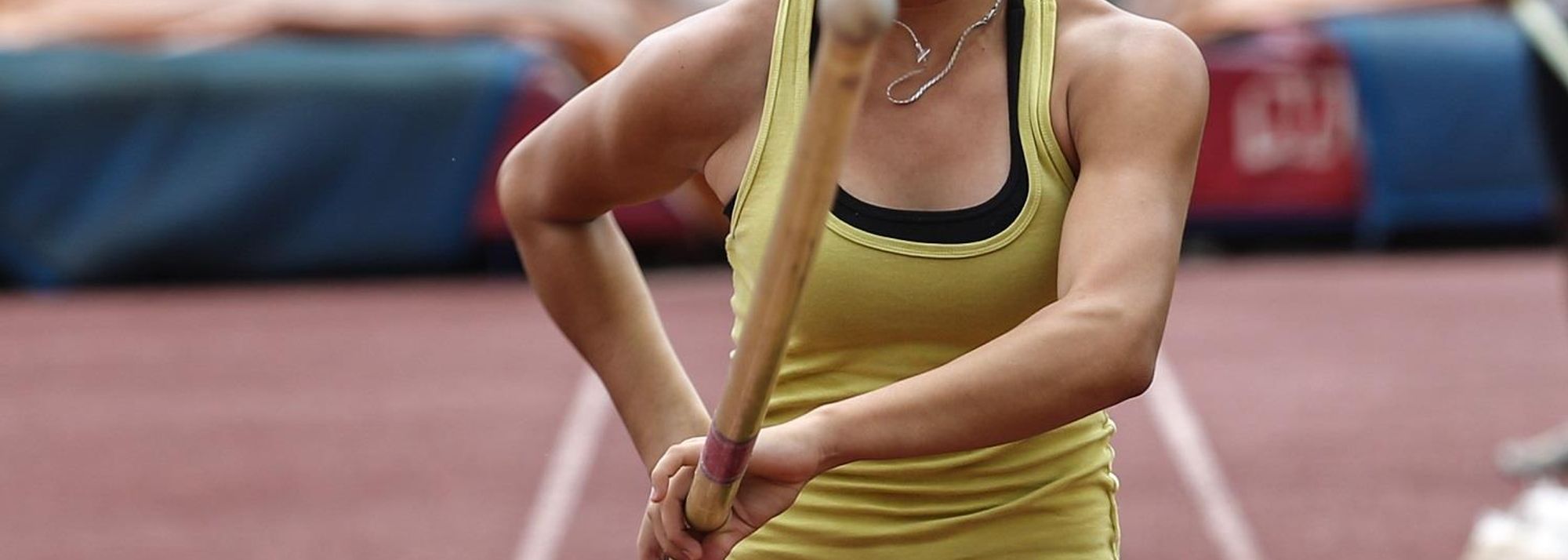Robeilys Peinado un training in Caracas, June 2013 (© Carlos Eduardo Ramírez)
Up until recent years Venezuela wasn’t a country known in the athletics world as a pole vaulting powerhouse. However, in 2005 Keisa Monterola put the South American nation in the map thanks to the silver medal she obtained at the 2005 IAAF World Youth Championships with, what was then, a national record of 4.30m.
Her great achievement in the Moroccan city of Marrakesh is one of the sweetest moments for athletics in Venezuela in the past 20 years and has since served as an inspiration for the younger generations, not least Robeilys Peinado, the country's big hope for a medal, and maybe gold, at next month’s IAAF World Youth Championships in Donetsk.
Peinado leads this year’s girls’ list in her event with 4.35m, a height she achieved last month in Barquisimeto.
Nobody is better placed than her coach, Carlos Faneyth, to explain the fantastic rise of Peinado, who was only seven years old when Monterola obtained Venezuela’s only medal at any IAAF World Championships.
“She started with gymnastics at three years old, as she was always very athletic, coordinated, and almost hyperactive. At age 12, when she was a promising national figure at that sport, she became taller and begun to experience difficulties, especially with the asymmetric bars.
“At that moment she decided to quit gymnastics and picked up athletics after observing a Pole Vault trial for new talents at the National Stadium. A colleague diverted her to me in December of 2010; she had just turned 13.
“Robeilys’ first challenges were to get used to running with, and without, a pole; and to learn the initial phase of the vault. We taught her all that using the principles and methods of the so-called ‘Donetsk School’.
Pole vaulting prodigy
“She picked it up quickly. Four months later, she was vaulting 3.40m. By September of 2011, a few months shy of her 14th birthday, Robeilys reached 3.90m, a height that Monterola only vaulted at age 16!
“Her progression and technical development continued in 2012, as her evolution in training and competition was evident,” continues Faneyth, a former pole vaulter himself who jumped 4.70m indoors in 1985 and 5.00m in an unofficial exhibition in Paris in 1984.
“Robeilys' first four-metre jump happened in an international meet in Barquisimeto in 4 May. Cuba’s Yarisley Silva and Daylis Caballero vaulted 4.60m and 4.50m, while Robeilys was third with 4.00m; she competed very well against high quality rivals.”
Peinado ended 2012 with a personal best of 4.15m, equalling the world age-14 best.
Peinado, whose unusual first name comes from combination of her parent’s names – ROBErt and MaurILYS – is now 1.70m tall and weighs 59kg.
“She is vaulting with poles that are 4.30m long and designed for 160lbs (72.6kg) athletes. We haven’t done anything else other than continuing her normal development; as a consequence, her immense talent has brought us the national (outdoor) record and South American youth, junior and under-23 records.
Scary tale
“Her evolution is actually scary (the world age-15 best is 4.40m by Australia’s Liz Parnov in 2010), but we aren’t forcing her at all.
“I work along with Oscar Hernández, who assists me with her gymnastics preparation. So far Robeilys hasn’t done any strength conditioning for high performance, nor is she working with heavy loads of training. We are advancing slowly but surely, at a natural pace,” explained Faneyth.
Faneyth has 30 years of experience in pole vaulting and trained himself at the famed INSEP facility in France, guided by Maurice Houvion. He has coached many of Venezuela’s pole vaulters.
The inevitable comparison with Monterola emerges. “But Peinado is a different athlete. Monterola’s marks have always been a goal for us. Certain situations that happened outside of the sport have been a factor in Keisa’s evolution after 2005,” added Faneyth.
“I don’t dare to use examples of personal and particular situations with the purpose of obtaining conclusions. I believe that each individual has their own emotions, actions and aspirations, and that the ultimate fail or success will depend on how we manage our thoughts and rational decisions.”
Faneyth describes Robeilys as “a normal girl, very happy, who has many friends and likes going to the beach, the cinema and amusement parks.
“She is very expressive, yet analytical, disciplined and driven. We know we have a great talent in our hands and we are trying to help her to reach all her immense potential.
“Our example of a pole vaulter is Yelena Isinbayeva, but we have also studied Vitaly Petrov’s work with Sergei Bubka. We try to learn from all the great masters to help Robeilys to develop in the best possible way.
"We believe that soon we will be in a position to improve to greater heights; however that’s not our objective," he adds. "Good things will come our way if we just continue doing what brought us to this point.”
Eduardo Biscayart for the IAAF



